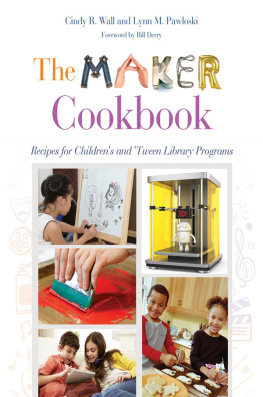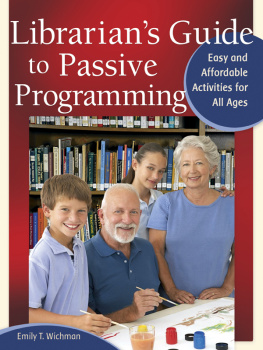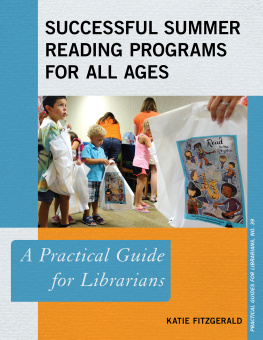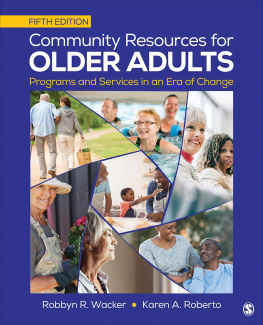PROGRAMS
THAT POP
A YEAR OF FUN PROGRAMMING FOR SENIOR ADULTS IN NURSING HOMES, ADULT DAYCARE, AND CHURCH GROUPS
By
Debbie Ann Scott
Table of Contents
52 Programs That Pop:A year of fun programming for senior adults in nursing homes, adult daycare, and church groups , by Debbie Ann Scott. ISBN 978-1-62137-694-1(Softcover) 978-1-62137-695-8 (eBook).
Cover Design by Bearded Bee Designs.
Published 2015 by Virtualbookworm.com Publishing Inc., P.O. Box 9949, College Station, TX 77842, US. 2015, Debbie Ann Scott. All rights reserved. No part of this publication may be reproduced, stored in a retrieval system, or transmitted in any form or by any means, electronic, mechanical, recording or otherwise, without the prior written permission of Debbie Ann Scott.
FOREWORD
I would like to thank my wonderful husband for encouraging me to write this book and for his editorial suggestions. The colorful and fun cover was designed by my talented graphic designer son (see www.BeardedBeeDesigns.com). I want to thank my daughter who is always supportive of anything new that I want to try. God has blessed me with a wonderful, supportive family who are a constant source of joy.
INTRODUCTION
All of my professional career I have enjoyed creating compelling programs for senior adults. As an Activities Coordinator fresh out of a masters program in Gerontology, I found myself with the responsibility of planning and implementing activities for 80 residents of the Asbury Methodist Village Nursing Home in Gaithersburg, MD. It was challenging to think of fun, interesting activities each month and provide programs that the residents would enjoy attending and participating in each week. I must admit, that there were times when the creative juices werent flowing quickly enough. There were other times when the press of meetings and the abundance of documentation required for group and one-on-one visits or when planning time was limited due to group programs, the one-on-one programming for the bed-bound residents left time for planning consistently awesome programs challenging. In time, I found myself planning programs at home on my own. There just were not many printed resources to call upon to help with the planning. Someone should write a book, I thought.
In time, our family would relocate to a different state. Before too long, I would serve as the Director of Senior Adult and Childrens Ministries at Colonial Avenue Baptist Church in Roanoke, VA. Directing activities for both seniors and children gave me over a decade to perfect programming and activities techniques. I discovered what worked and what didnt.
Great programs for seniors work on several levels. They include learning, inspiration, and fun. Great programs and activities challenge seniors to give it a try, and even learn a new talent. Great programs often call upon several of the senses including touch, vision, hearing, taste and smell. Great programs can be entertaining but they also can be service-oriented. Art projects, craft projects, brain teasers, singing, storytelling, and reminiscing all play a helpful role. One of my favorite projects involved knitting hats for premature babies in the local hospital. Another involved making doll clothes and dressing dolls for a local charity to give to needy children at Christmas. Great programs and activities for seniors can entertain, educate, inspire, and connect seniors to the community, to their family, and to each other.
Senior adult directors have a challenging task. Some days a group leaders time and ideas are scarce. I put this book together to help those who lead senior adults have a resource with workable ideas that you and your seniors will look forward to and enjoy. I hope you will have as much fun with this book as I have had creating 52 programs that pop!
JANUARY
Theme: Hat Day
Decorate with a variety of hats. You can order some from Oriental Trading or pick them up at a craft store. Have the participants wear different hats to the program.
Food:
Craft:
History:
Hats have always been an accessory that draws attention, accents and makes the wearer stand out. In the past, hats were worn by the elite to draw attention and set them apart as a person of wealth and influence. The first hat appeared in 3200 BC in Thebes tomb pictures. These pictures had a men wearing coolie straw hats. In 70 BC, a fur and feather headdress, called a chieftain, belonging to a young Danish lad appeared. We know this style hat as a headdress worn by Native Americans.
Next to come on the scene were felt hats in 50 818AD. The legend states that St. Clement used felt in his shoes to soothe and protect his feet as he walked. He noticed that it kept his feet warm and dry so he decided to make hats out of the felt to keep his head warm. This new hat design was successful and he also noticed that his hat would keep his body heat in too. Hatters in Ireland began making felt hats for this purpose and they became quite popular.
The title, milliners, was coined in 1529AD when they started making hats in Milan and Northern Italy.
Haberdashers companies were popping up that made and imported all types of hats to accent men and ladies outfits. Many new styles were being invented which included the top hat. In fact in 1797AD the top hat started a riot when John Hetherington wore it in public. Hetherington was even fined $500 for the riot his hat caused. This famous style of hat was even worn by our 16 th President, Abraham Lincoln and it became his trademark look.
In 1865 AD the hat known as, the Stetson was developed and named after the creator John B. Stetson. This cowboy style hat is worn by many not just in Texas or out West, but all across the globe. Cowboy style hats are worn by farmers, businessmen and singers as an accent to their outfits or to give their look character.
The next arena were a large number of different hats are worn is the Kentucky Derby. In 1875AD you would see ladies adorning hats of all styles with feathers, bows, and flowers. Men wore straw and trilby hats, or capps . This tradition continues today. Many women plan their Derby hat for months before the event.
In America hats show up everywhere. We even see them on Presidential Inauguration Days. In fact Aretha Franklin was featured in TIME magazine when she wore a stunning hat to an Inauguration Day. Even Jacqueline Kennedy, wore her famous pill box style hat at her husbands Inauguration and started a trend among the ladies as they began wearing the pill box style hat. Another famous lady, Princes Diana, was famous for her lovely hats at all Royal occasions, and her classy look was enjoyed by all.
Church services can also give occasion to hat-wearing. Easter Sunday seems to be a favorite day to sport a lovely bonnet or hat that compliments an outfit.
Hats are a fun accessory that everyone can wear to dress up an outfit, draw attention to themselves or just to accent your character with a style of your own.
Activities:
Have hats or pictures of hats on display and have the participants determine the kinds of people who uses that type of hat. Examples might include a chefs hat, jockey hat, hard hat, motor cycle helmet, top hat, beret, fire hat, cop hat, service hat, derby, ball cap, etc. How many hats can you find?
Invite participants to wear a hat to the program and tell about the hat they are wearing.









